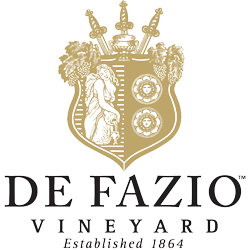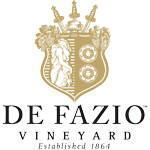CONTINUING TRADITION
THE DEFAZIO LABEL
Angelo always intended to use his family name for his wines, but this opportunity was denied him due to De Fazio already being a registered trademark, hence the creation of the Zitta label. When it became available in 2014, Angelo quickly snapped it up and started thinking what would be the most fitting way to incorporate it into the range.
“I love the romance of wiping the dust off the old, heavy traditional bottle, carefully breaking the wax seal, slowly removing the cork. Pouring the wine and reflecting on past experiences.” says Angelo. “It’s one of the joys of getting older, you realise there are some things that should be left unchanged, and that’s how I feel about winemaking”
With this feeling the De Fazio label had its purpose, it would be an experience, a celebration of traditional winemaking methods, where the terroir and fruit are the key factors in the resultant wine, the way it’s been done for centuries.
To create this truly special experience, small parcels of handpicked fruit from specific sections or blocks of the De Fazio Vineyard are collected, but only if they meet Angelo’s exacting standards. After fermentation in open fermenters the wines are basket pressed and matured in specifically selected imported French Oak barrels from some of the famous and oldest forests in France. These handcrafted barrels are from century old family-owned cooperages, regarded as the best in the world. Then only when the wine is ready it’s bottled to the highest standard.
Each limited-release vintage is a time capsule, a taste of that season, that moment in time.
The range features Shiraz (Syrah), Grenache, Mourvédre (or Mataró) and Nero d’Avola an Italian variety indigenous to the village where Gaspere (Angelo’s father) was born. There is aslo a special blend of Syrah and Nero d’Avola, using techniques Angelo was taught when visiting family in Italy a few years ago.
Wines bottled under the DeFazio label are rare wines of the highest quality, produced simply for the love of the art.


